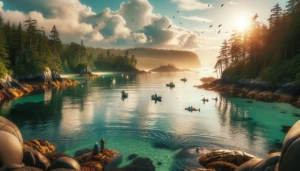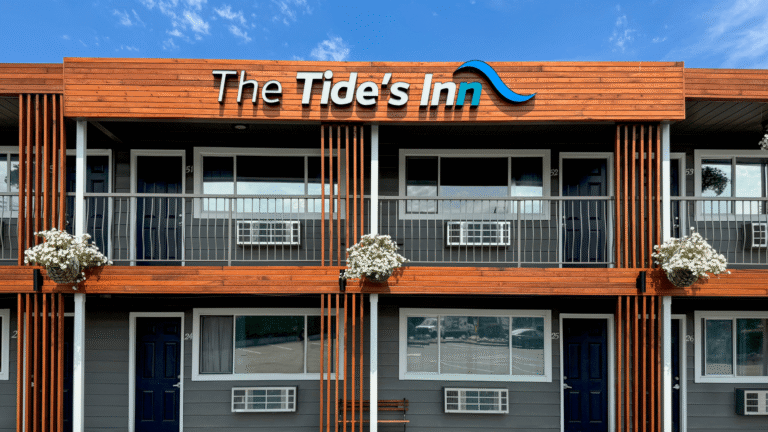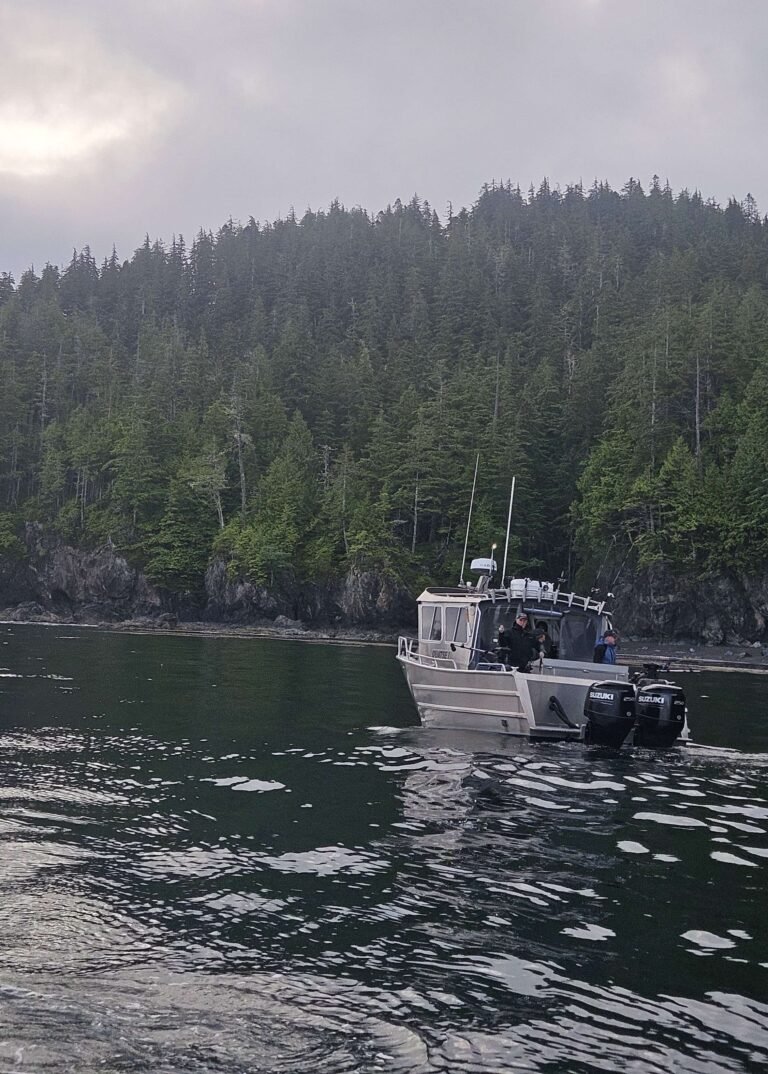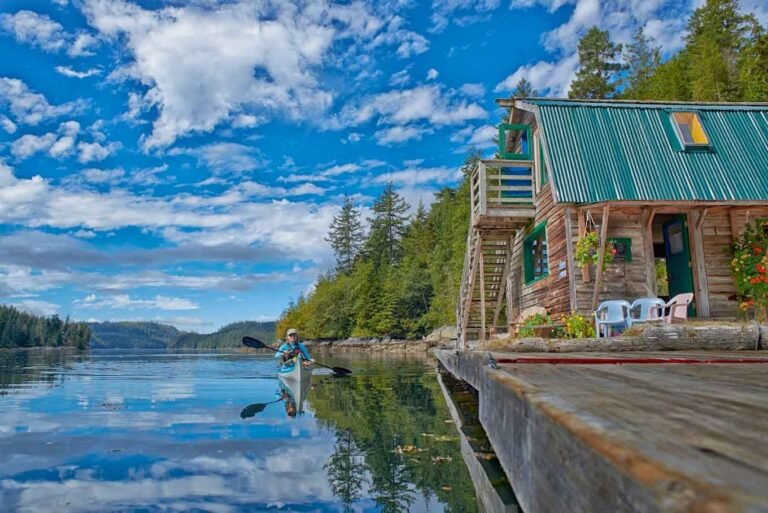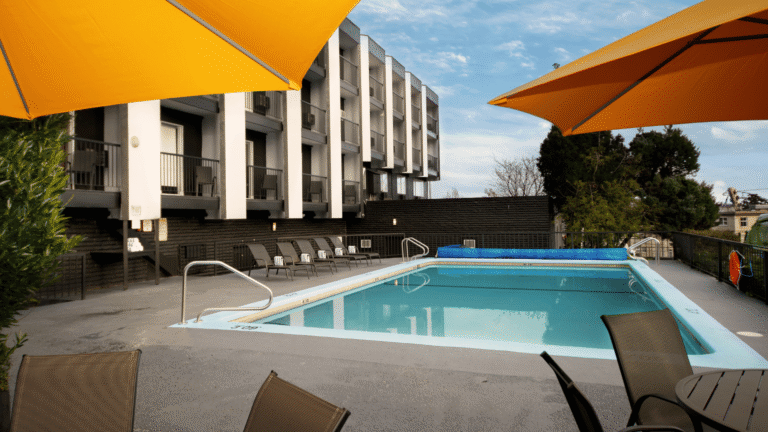Fishing the Sunshine Coast
Fishing Guides: BC Sunshine Coast
Close to the big city but far from the crowds, the Sunshine Coast is a fisherman’s paradise. If you’d describe yourself as an avid fisherman, you really should check out this area during sport fishing season!
Bordered by the snow-covered Coastal Mountains, this protected coastline stretches 105 miles (175 km) along the northeast shore of the Strait of Georgia, from Howe Sound to Desolation Sound.
The Sunshine Coast boasts clean sparkling Pacific waters, secluded sandy beaches, and bays with Red Cedar and Arbutus trees sprinkled along the coastline. Canada Geese, Bald Eagles, Blue Herons and Osprey share the sky and shoreline.
Locals boast of 14 more days of sunshine per year than Hawaii, with approximately 270 growing days per year. All of this is only two hours by car and ferry from Downtown Vancouver. Enjoy the picturesque, 40-minute ferry ride from Horseshoe Bay to Langdale, and continue with the paved coastal highway, following the coast northwards.
Click for a Map of the Sunshine Coast.
This region offers relatively protected waters for sport fishing on Georgia Strait, with Vancouver Island protecting the area from the open sea. The numerous islands also offer shelter, so you are not subjected to the high seas of the Pacific Ocean (no swells or fog).
The Sunshine Coast offers year-round guided fishing for Chinook Salmon at great resorts at such locations as Secret Cove, Pender Harbour and Powell River. Feeder Chinooks are present during the winter months, and the migratory Chinook start showing up in late spring, with the best fishing from June to September.
Coho are best from June to September, while the Northern Coho are available from September to October. Pink and Sockeye go by from mid-August to Mid-September, and Chum Salmon from September through October.
Another big attraction to anglers is the bottom fishing opportunities for large Red Snappers (Yellow Eye), Ling Cod, Rock Cod, Flounder and Tommy Cod. Most of these species are can be caught year round, with only Ling Cod being closed from October to May. For the seafood specialists, the prawning and crabbing is excellent year round, all along the Sunshine Coast. Local fishing spots include Halfmoon Bay, Buccaneer Bay, Secret Cove, Lasqueti Island, Texada Island, Seal Reef, Bejji Shoals, Bargain Harbour, A Frame and Quarry Bay … just to name a few.
Unique to the Secret Cove and Pender Harbour area, mooching is the way most of the guides and local anglers fish for these tail-walking salmon. Most of the fishing is done from larger charter yachts from 26 ft. to 40 ft. The salmon fishing techniques are quite different, as we don’t use a cut plug or troll for the salmon…we mooch. This means that we locate the schooling bait fish off reefs and kelp beds with sounders, and anchor the vessel over the bait fish, using live herring, the natural food of the salmon.
We go equipped with long, limber 10-ft salmon rods, a single-action graphite fishing reel, a 3-ounce weight, about 8 ft of light leader, and a single # 10 treble hook in the nose of the live herring. Fishing anchored, we are able to fish from 4 to 7 rods around the vessel at different depths, from the bottom to the surface. Live bait is available at most marinas from Gibsons to Pender Harbour. This offers a natural light tackle fishing method and is a fun way to fish for these powerful salmon.
Sechelt Peninsula
If you like to pick mussels and oysters, the beach at Roberts Creek Provincial Park‘s picnic grounds is a good place to visit at low tide. Just check for red-tide warnings and harvesting closures beforehand at the entrance to the park.
The sandy beach at Davis Bay, less than 2 miles (3 km) south of Sechelt, may yield clams, but your best bet is casting from the pier here for salmon. So successful has the rearing program been at nearby Chapman Creek, that it is the only stream on the Sechelt Peninsula where anglers can keep coho and chinook salmon. It’s still best to check local regulations beforehand. While the hatchery has been experiencing good returns, fish stocks in the Strait of Georgia and Malaspina Strait have been steadily declining in recent times.
Secret Cove, about 10 miles (16.5 km) north of Sechelt, has three private marinas, which, along with the marinas in Pender Harbour, have some of the best fishing charters in the Lower Mainland. As successful lures, hot spots, and biting times vary so greatly in the convoluted waterways around Pender Harbour and nearby Jervis Inlet, it’s important to drop by one of the marinas for the inside line, plus charts, licences, restrictions, and limits. Fishing is what they do best here, and patience is their long suit with visitors – all that sunshine has a profoundly positive effect on the attitude of residents.
March is one of the few months on the fishing calendar when anglers get to stay home and tidy their tackle boxes, or tie on a fly and try for surface-feeding trout at Garden Bay Lake, Hotel Lake, and Mixal Lake, which are located beside Garden Bay Road, Irvine Landings Road, and Hotel Lake Road, respectively, west of Hwy 101. Trout Lake is the easiest to locate, as it lies on the north side of Hwy 101, 6 miles (10 km) north of Sechelt.
Malaspina Peninsula
Powell River may be one of the world’s shortest rivers but it connects with a string of lakes – Powell, Goat, Windsor – that characterize much of the inland region. Fishing for cutthroat trout is possible year round in milder years, as waters in the area rarely experience a freeze in any but the coldest winters. One of the best places to begin is at any of the access points to the Powell Forest Canoe Route.
South of Powell River, some of the best ocean fishing is found in the Lang Creek Estuary, about 13.5 miles (22 km) north of Saltery Bay on the west side of Hwy 101. Beach casting is popular here for spring salmon from mid-September through late October. Owing to the shallow water of Lang Creek’s outlet into Malaspina Strait, use lures that don’t sink quickly. If you use a spin rod with a light line, try spoons in a variety of colours to match the clarity of the water. Salmon here are in the range of 20 to 50 pounds (9 to 23 kg). Farther up the coast near Lund you’ll soon discover why a small, offshore island is named Dinner Rock: ling cod and salmon frequent these waters.
When planning your next saltwater fishing trip, this region is arguably one of the best light-tackle salmon fishing destinations in British Columbia. The season never ends, it just gets better at certain times.
https://www.sunshinecoastcanada.com

